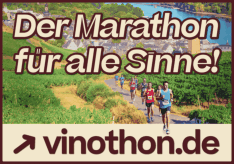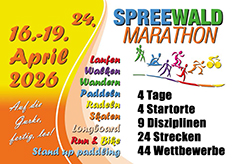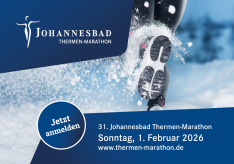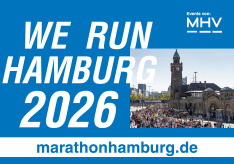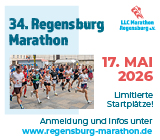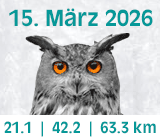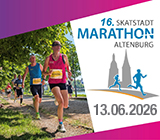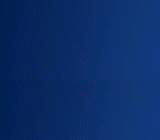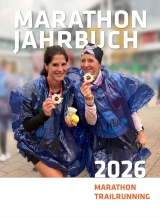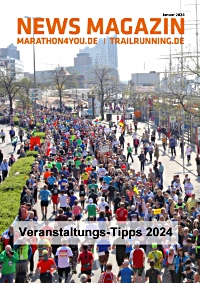marathon4you.de
Rock and Baroque (English Version)
Photographer: Kay Spamer
Translated by: Natascha Sambach
How is your readiness to read? Do you just skim through our texts? Science certifies a dwindling readiness to follow printed thoughts. But, experts say, there is a cure for that: a combination of a healthy work out and brain calisthenics. And this is not only done by testing your knowledge as a matter of routine. One must certainly agonize over this weakness and challenge the mind. Well then, go ahead and enjoy reading.
It was said to be gloomy, barbaric, everyone was cold and suffering from hunger. People did not deal fairly with each other. And could the paving stones in the streets and alleys talk they would tell us about the Romanesque, the Gothic period and the Renaissance. They could recall stories from the Baroque era, from rococo to classicism. 1000 years of town history. Many tourist guides have been written and many of them I have read to be well prepared for this marathon race on historic grounds. I read about churches and bridges and about the worlds biggest castle. In addition to that, I read about the first, second and third Defenestration of Prague.
I asked myself, is this all too much history and too much culture for a race report? Where shall I begin? Maybe I should start with what we all already know about the city. For me Prague always was the gentleman in a Stresemann wearing a white carnation on the lapel and carrying a black umbrella. He just had to tap on his magic bowler hat to be able to change his appearance into a puppet, to conjure up miscellaneous objects or to do other magic. In addition to that I remember Karel Gott singing about traveling the world with the pockets full of money. However, we are now on our way to the fairground to pick up the participants documents and a backpack for the crace-day baggage drop off as well as the event shirt.
“Fish swim, bird fly, man runs”
Everyone knows the man behind that quote. The waggling head and the poked out tongue were one of his trademarks. Emil Zátopek – One of the worlds greatest athlete of the 20th century: During 1949 and 1954 he set 18 world records. After winning gold in London in 1948, he could be proud of another three Olympic gold medals in Helsinki over 5000 and 10.000 meter as well as over the marathon distance in 1952.
A huge, oversize black-and-white shot showing Zátopek in action shines forth the entrance hall of the Marathon Sports Expo. On the occasion of the 60th anniversary of his success an exhibition is dedicated to his person and his goals.
Dog show
On the fairground we get to experience a somehow special kind of show: Sponsored by a famous dog food company the “Walk with Dog” is popular not only with the proud dog owners. Together with their best friend they run through the Stromovka Park. The song “who let the dogs out” blares from the loudspeaker and some of the mastiffs joins in. One can see a great variety of dog breed: Some tiny like hamsters others as tall as a horse.
One dog looks as if he did not care at all while others look afraid and scared to death. We all know the preconception that dogs look like their owners and yet I feel confirmed another time as I observe lordling and mistress standing together in the starting block waiting for the starting signal. And as it sounds dogs and owners start to run. Some seem to run for gold whereas others simply enjoy a relaxing walk. After finishing the 4,2 kilometer course man's best friend get a medal and sponsored food. But not only the dogs were honored today. Participants of the Mini marathon as well as the Skating event over 6,5 kilometer receive a medal.
One can only imagine what will be the set of tomorrows marathon race. Today the city's urban center is crowded with tourists and so are the boats floating along the Vltava. In the historic city center, the Old Town Square, tourists gather around the Jan Hus Memorial. Symbolizing not only national rebirth, the religious reformer Jan Hus, who for his beliefs was burned at the stake in Constance in 1415, also became a symbol of dissidence and a symbol of strength against oppressive regimes.
Now, here and there one can catch a glimpse on some runners. But this is about to change within the next few hours. Prop master appear in order to turn the square into an arena, rolling out a blue carpet while tourist morph into athletes. Oversize full-colored poster at the house walls announce the upcoming sporting event that is going to start in a few hours: The 18th Prague Marathon.
Race Day
It is a cold and windy Mothers Day as the city awakes. But unlike yesterday, the orient sun sparkles above the city's rooftops.
Against historical backdrop townspeople start winding up the roller blinds, ascending the awnings, setting up the chairs in front of the cafés and some bars release the last nights smoke through the front door. The scenery changes as the Old Town Square fills up with protagonists and background actors.
Jenny and Jonny
It is a hustle and bustle and while the protagonists - the elite - is warming up and toeing the scratch, we - the laymen - are on our way to the baggage drop off.
After that my way is headed towards Jenny, while Kay wants to meet with Jonny. There are many runners already lining up to see her or him, so I guess we are not the only one with a human need. I wait in line while wishing for a magic bowler hat to conjure my very own port-a-potty. Jenny or Jonny, that is how they call them here. And as I stand here waiting, I remember something I read in a tourist guide about the first public restrooms in Prague. Established in 1835, the improvement from moderate means to well-appointed restrooms in “Swiss Style” took almost 70 years. In fact, there have been restrooms of first, second and third class. Third-class restrooms were for free, second class was charged two, and first class four kreutzer. An annual ticket could be bought by the ones who could afford it.
Signs now lead the way to the baggage drop off, the showers, the massage tents, but until then, a few meters must be run.
We finally made it to the starting area. Over 9000 runners from over 80 countries are ready to run. Among them the 51-year old Czech Ales Tvrdy. 18 years ago a cardiac transplantation saved his live. He used to be an Ironman, running marathons and ultras. One day he could not even go upstairs. While everyone else is in starting position, double-checking their watches and waiting for the race to start, Ales just wants to run. He wants to run the first marathon ever since the transplantation. He does not care for a target time.One moment it is alarmus and excursions and the next moment utter silence and tense expectation fills the square.
Matching the entire scenario perfectly a cloud darkens the sun. The start signal sounds as light blue and white balloons rise up to the sky accompanied by the music of Bedřich Smetana. By the end of 1874 Smetana had become completely deaf. Nonetheless he composed Vltava, also known by its German name “Die Moldau”. Accompanied by Smetanas masterpiece on an open air concert we set our first steps on this historic pave. Running through Prague's historic city center knowing that its buildings have been included in the UNESCO list of World Heritage Sites gives me goosebumps. We follow the paths were crackowers left their mark on in the 15th century. During the Middle Ages these extravagantly long shoes showed the membership of one's particular estate. What has been the crackowers a long time ago is now the participants running shoes. One can see them in sulphur-yellow, amber, wasabi-green and cobalt blue. Still hearing Smetanas tunes we step on the pave of the grand boulevard of Paříská Street. Within the course of rehabilitation work the former Jewish ghettos that were located here until the turn of the century have been dismantled. The street therefore is temporarily called Asanacni (rehabilitation street) and renamed Paříská Street after the rehabilitation work has been finished about 1925. This certainly is not Paris, but one can still sense the cosmopolitan flair. Buildings with the typical historic gable form decorated with Art Nouveau mosaics. Now and then townspeople and visitors must have been impressed. And what has been the home of the Bourgeoisie for decades, the luxury rental properties unite classic historical styles in architecture with decorative elements of the Art Nouveau era, is nowadays the venue of chic restaurants and shops.
The Paříská Street runs right through the Jewish quarter and this is where we now head towards the Vltava. It was the Old Jewish Cemetery that inspired Umberto Eco's novel “The Prague Cemetery” which is located right next to the course. It has been estimated that there are approximately 12,000 tombstones partly visible on this cemetery.
The next highlight of the course is the Čechův most (Čech Bridge). Its length is 169 meters with which the bridge is one of the shortest in Prague. It is this very bridge from which Georg Bendemann commits suicide after being sentenced to death by drowning by his father in Franz Kafkas tale “The Judgment” from 1912. As soulful as the river flows through Prague we now run across that bridge. It connects the Prague districts Old Town (Staré Město) and our next destination, the Malá Strana. The oversize metronome that appears on a small hill right in front of us cannot be overlooked, yet traces of the socialistic past are hard to find in the city center. Right after the Gentle Revolution the people of Prague freed themselves from the symbols of their past. The Metronome was erected in 1991, and stands on the plinth left vacant by the destruction of an enormous monument to former Soviet leader Joseph Stalin which was destroyed in 1962. The 75-foot-tall Metronome is now mostly a scenic vista but unfortunately not ticking today. We have all the time in the world and Kay is happy to see the first band firing up themselves, us and the crowd. The route takes runners past the Prague Castle going slightly uphill before we reach Mostecká at kilometer 2.
In 1329 the streets leading through the cities Old Town were built from cobblestones and therefore belong to Europe's first hard-surface roads and paths. Now and then those cobblestone streets, vibrant transport routes lined on both sides with shops and Baroque facade houses, were complemented by foot trails leading to the Prague Castle, to Vyšehrad and the Old Town. Picture it: Streetlights flickering, the smell of horse droppings in the air and the clatter of hooves resounding through the labyrinth of house walls. What would Berlin be without its Brandenburg Gate and what would Prague be without its Charles Bridge? And while still wallowing in the past we reach Prague's famous landmark.
Eggs and curd for mortar
In 1357, according to legend, Emperor Karl IV had ordered his people to bring eggs to Prague to support building the bridge. Over 300 years the Charles Bridge was the most important connection between the Prague Castle and the city's Old Town and adjacent areas. The solid construction was the only means of crossing the river Vltava until 1841. Among the most notable sculptures, one can find the statuaries of the Holy Crucifix and Calvary, and St. John of Nepomuk. He was the confessor of the queen of Bohemia and refused to divulge the secrets of the confessional. In 1393 he was thrown into the river Vltava from the Charles Bridge at the behest of Wenceslaus, King of the Romans and King of Bohemia. This kind of dealing with the undesirable ones must be a Prague specialty: They were thrown out the windows and into the Vltava, strangled and murdered.
Then the wheels of horse-drawn carriages made rumbling noises by passing the cobblestones on the bridge. Today I see runners as colorful dots creating a hollow kind of sound scape. We are watched by 31 stone-made statues and 10 surveillance cameras as we cross this impressing 516m long monument. It will be our only possibility to run over the bridge, because in a few hours it will be filled with tourists again. Music welcomes us from the Old Town located on the other side of the bridge, what an amazing impression.
Over six bridges you must go, 42 kilometers you shall pass...
Almost 20 bridges (mosty) connect both sides of the Vltava in the Czech capitol. A marathon race crossing more bridges only exists in Venice. Feels like a bridge day. After a short river walk we find ourselves on yet another bridge, the Mánesův most. While crossing it we see the Charles bridge on the left and the Vltava bridge on the right side with runners on all three bridges at the same time. I have never seen anything comparable. After 200m we enter the district Malá Strana again. Here the Palais Lobkowitz is located, a baroque palace build in the 18th century. The noble coat caps the impressive entrance gate and only an inconspicuous sign reveals the actual host: the German Embassy. The balcony of this building has a special role in Europe's modern history. On September 30th 1989 it is this very balcony from which the former German foreign secretary Hans-Dietrich Genscher informs over 4000 GDR-fugitives, that they are allowed to travel into the Federal Republic of Germany. - A crucial step in the reunion of both German states.
The center of Malá Strana is the picturesque Malostranské náměstí, the former market place. Also located in this area is the old coffee house, where Kafka, Brod, Werfel and other important literati of the 1920s met. We arrive at the first service point at kilometer five on the nábř. Kapitána Jaroše. Not far away one can find the Prague Zoo and the stadium of the soccer club of AC Sparta.
The next bridge to cross, Libeň Bridge, is 400m long and slightly going uphill. We ignore the golf and tennis signs for both tennis courts on the left hand side and a golf course on the right hand side and run our way straight towards Bubenské Nábřeí. The three-lane road reminds me of the Mainzer Landstraße as one of the main arterial roads in Frankfurt am Main being a part of the annual Frankfurt Marathon. Here in Prague the area is now an industry and business park located on former slaughterhouse premises.
Bearing in mind that I have to run here again at kilometer 38 my imagination of Prague in an oil painting is somewhat fading away. Thus all the more we are pleased to hear the sound of another fantastic band heating up both runners and the crowd.
Smetana, Dvorak and even Mozart had a stage
Prague, the evening of October 29th, 1787: The audience of the Národní divadlo, the National Theater, eagerly awaits the premiere of Mozart's “Don Giovanni”. The people of Prague have always cared for music and loved and adored especially Mozart.
Today one can see and hear over 30 rock bands along the course and I wonder if it is the Czech saying that musicians come to heaven, that brought them here letting us enjoy this running rock festival. I have to admit: Prague rocks!
One forth of the whole course needs to be run on cobblestone streets and so do we now run along the winding alleys back to the Old Town. As we reach kilometer 11 at the Tesnovsky Tunnel another band is heating up the athletes. Because of the Tunnel's proximity to the former communistic headquarters while being built, the 360 meter long tube is also known as Husak (Minute's silence). From here one can see a floating disco rocking on the Vltava as well as towed hotel ships. We again run across the grand boulevard of Paříská Street back to the Old Town passing the vanguard modern theater “Laterna Magika” which is connected to the National Theater.
Did we cross the finish line already?
Again we run across Prague's most beautiful square, the Old Town Square, that Egon Erwin Kisch once called the “sensation fair”. We are on the course for almost one and a half hour and directly heading towards the finish line. How is that even possible?
But what a brilliant idea of the event organizers it was to make the route cross both start- and finish line twice. This way we get to enjoy the crowd and the bands, all in all the fantastic atmosphere right here on the Old Town Square for another time. Yet we reach another bridge but this time it is for pedestrians only. And as we run underneath it and back again through beautiful streets and alleys we pass the building of the Czech National Bank. This major sporting event attracts public masses and the whole city seems to be on its feed.
At kilometer 15 we reach the Praha Masarykovo nádraí (Prague Masaryk Railway Station). High above I can hear the helicopter and that is usually a sign that the best runners are very close.
Just being a office building the Tančící dům (Dancing House) stands out among the Baroque, Gothic and Art Nouveau buildings for which Prague is famous.
Originally named Fred and Ginger (after Fred Astaire and Ginger Rogers) the house resembles a pair of dancers with the grace and form from which they preformed as a basis for the shape of the façade.
Left-hand traffic
Right after passing the Dancing House we come across the runners faster than us as they already return from an turnaround area. We are on the left, they are on the right side of the road. I like to watch other tantalized faces, because they make me forget my own pain. Unfortunately this parallel running is not for long.
Due to the length of a marathon track you get to see streets and areas, which usually are not must-see points for tourists. We see buildings, on which the plaster on the walls is crumbling, and run through alleys with small bars and erotic shops. A bridge above us is part of the urban expressway and we are near the railroad. At this point no city can be distinguished from others.
If I don't know where I'm coming from, where have I been
Entering the turnaround area in the district Praha 4 we finally reach the southernmost point of the course.
Maybe we feel the spirit of Antonín Dvořák, Bedřich Smetana or Rafael Kubelík from the near cemetery? The Vyšehrad Cemetery is Prague's most known graveyard and the last place to rest for this famous persons.
At Kilometer 20 the relay teams have to hand the baton to the next runners. A few moments later we pass the half-marathon distance and reach another turnaround area, so we have to run back to the Palackého most and again cross the Vtlava and the riverside road.
Below us are the leading athletes running in northern direction. Prague 5 is one of the largest districts of Prague on the left side of the Vtlava including villa districts, small residential areas, new apartment complexes, factories and several nature protection areas. The hive of oncoming runners does not want to end and at kilometer 28 we reach the last turnaround area and finally can join the group running back north.
The next bridge we cross is the Most Legií (Legion Bridge) which could also be called the bridge of changing names. Built between 1898 and 1901 the bridge was renamed several times in the 20th century due to political changes. At is grand opening in 1901 it was entitled after Emperor Francis Joseph I. After the foundation of the Czechoslovakian state in 1918 the bridge was renamed to Legion Bridge honoring the troops fighting against Austria-Hungary. During the German occupation between 1938 and 1945 the bridge was titled after the composer Bedřich Smetana. In 1945 the name was changed to “Most 1. Máje” (bridge of May 1st) and with the collapse of the communist regime the bridge was finally renamed back to Legion Bridge. Now we run along the Vtlava on the oldest dock in Prague built in 1841. The styles of Gothic and Baroque meet on the Staroměstské náměstí. It feels like the past comes back to life. We reach the Křiovnická, a way like Kafka must have been walked on. He said about his hometown: “This little mother has claws.” Maybe he meant the cobblestone roads which stone-by-stone torture the cushioning of my running shoes?
My feet hurt and I cannot imagine the pain of another runner wearing so-called free running shoes as we pass him. At kilometer 32 we cross the Náměstí Jana Palacha (Jan Palach Square). Its current name was intruduced in November 1989 and commemorates Jan Palach, a student who immolated himself on January 16 1969 to protest against the Soviet occupation of Czechoslovakia. After a short run along the river promenade we cross the Mánesův most for the second time and from now on the course is identical to the first part of the race. On the Libeňský most we realize that we passed the last bridge and are on the last five kilometers. The young bands do not get tired to support every athlete on their way to the finish line. Just two blocks away one can find one of the homes of Franz Kafka. The Hotel Praha Continental is standing on this place today which was visited by stars like Michael Jackson. One last time we run on the Paříská Street as the Old Town Square with its finish line comes closer.
No red but a blue carpet with an enhanced appearance welcomes us on our last meters to the finish line. And I am more than happy to say that Ales Tvrdy also gets his finishing medal after finishing in 5 hours and 20 minutes.
A few hours later:
The blue carpet is gone and so is the finish area. The marathon race is over and the sun has set. Her light is replaced by a pale, yellowish glow, created by hundreds of gas lanterns throughout the entire city. And yet again this special light underlines the Middle Age atmosphere of Prague. We cannot stop appreciate sitting right now right here enjoying our last hours in this postcard-like setting.
Resume:
There are races you will never forget. This marathon race gives you a sportive and fast opportunity to explore some historic secrets of this city. But more than 80 museums and over 100 art galleries invite for further discoveries.





 Prague Marathon
Prague Marathon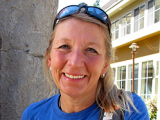


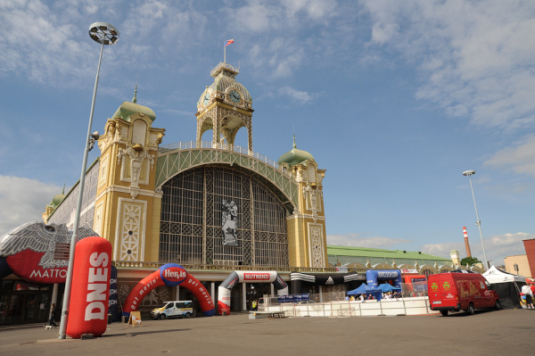
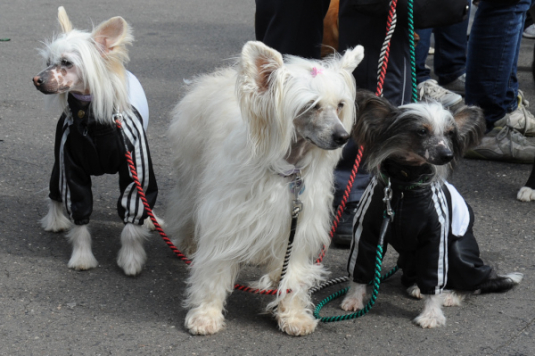
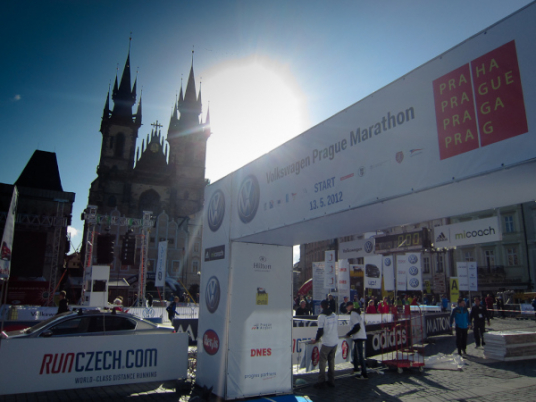
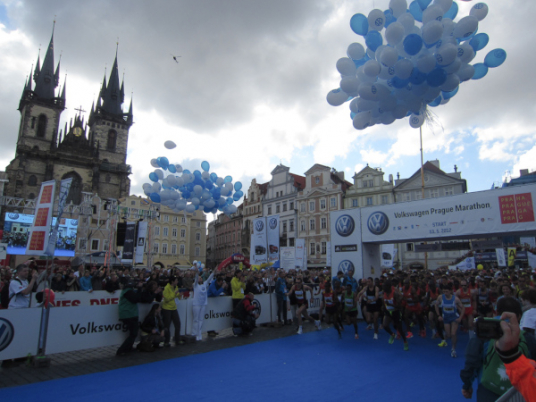
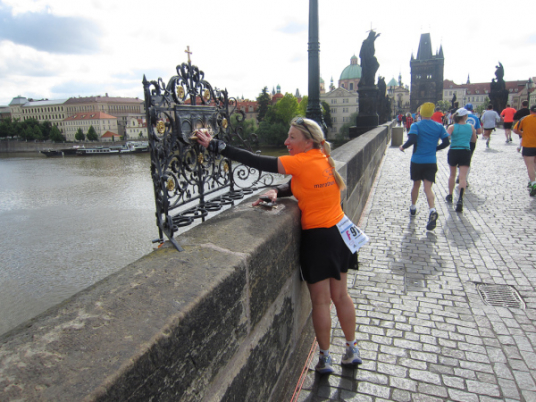
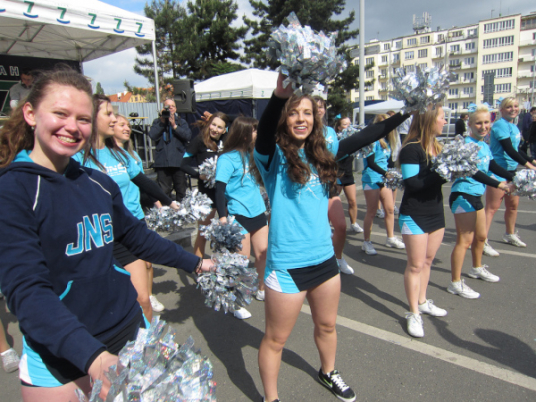
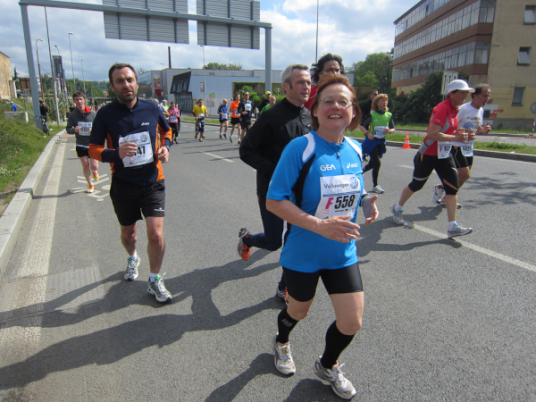
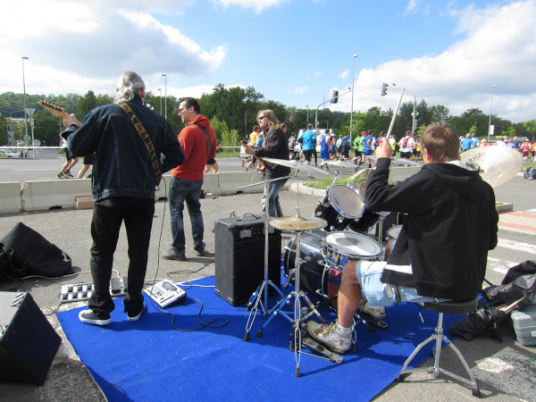
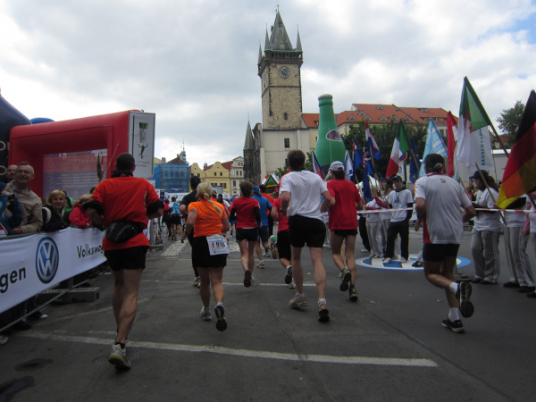
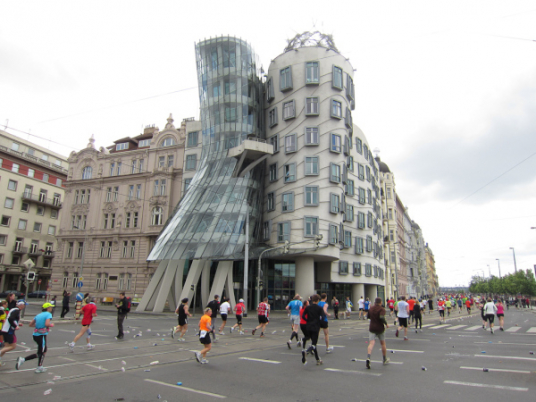
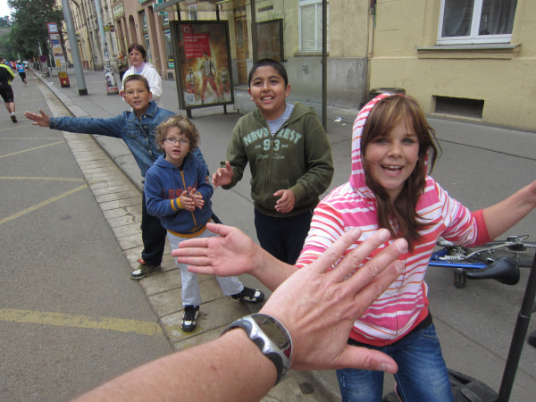
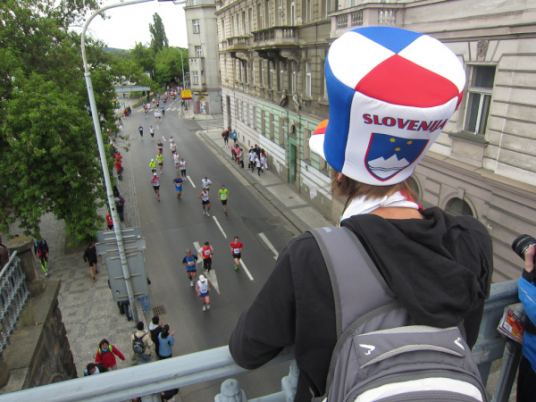
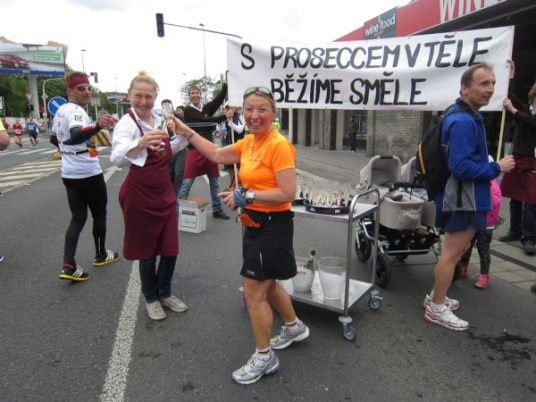
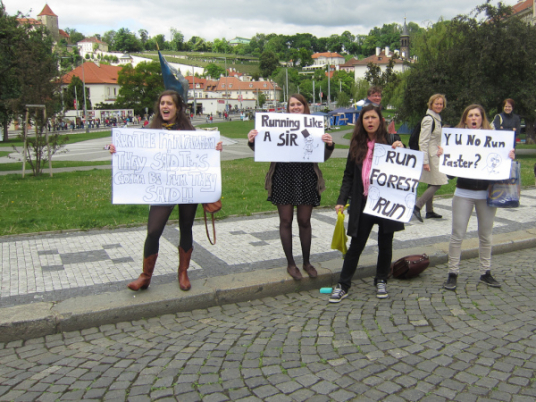
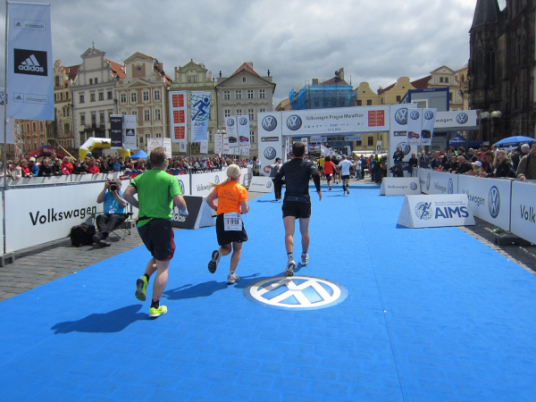





 zur�ck zur �bersicht
zur�ck zur �bersicht